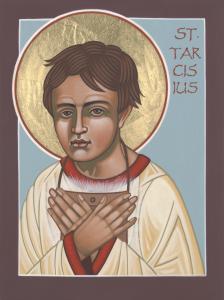In the annals of early Christian martyrdom, few stories capture the heart quite like that of Saint Tarcisius of Rome 1. This brave twelve-year-old boy chose death over betraying his sacred trust, becoming one of the Church’s youngest martyrs and a powerful symbol of Eucharistic devotion that continues to inspire Catholics worldwide 23.
The Dangerous World of Early Christianity
Life Under Roman Persecution
Saint Tarcisius lived during one of the most perilous times for Christians in the Roman Empire 4. Around 253-260 AD, Emperor Valerian unleashed brutal persecution against the growing Christian community 7. Churches were destroyed, Christian gatherings were forbidden, and believers faced imprisonment, torture, and death for practicing their faith 5.
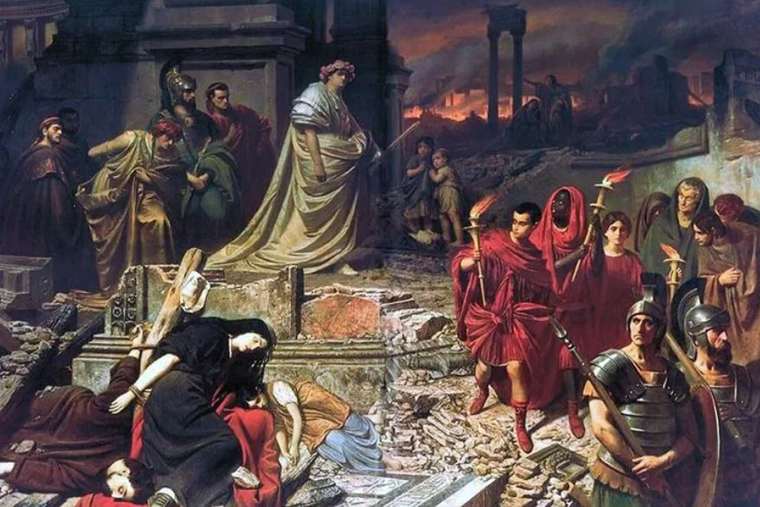
A painting depicting the Roman persecution of early Christians, with scenes of destruction and figures representing both the persecuted and the persecutors co
During this dark period, Christians were forced underground—literally 2. They gathered in the catacombs, vast networks of underground burial chambers that stretched for miles beneath Rome 2. The Catacomb of San Callisto, where Tarcisius would eventually be buried, housed nearly half a million bodies across twenty kilometers of tunnels 1.
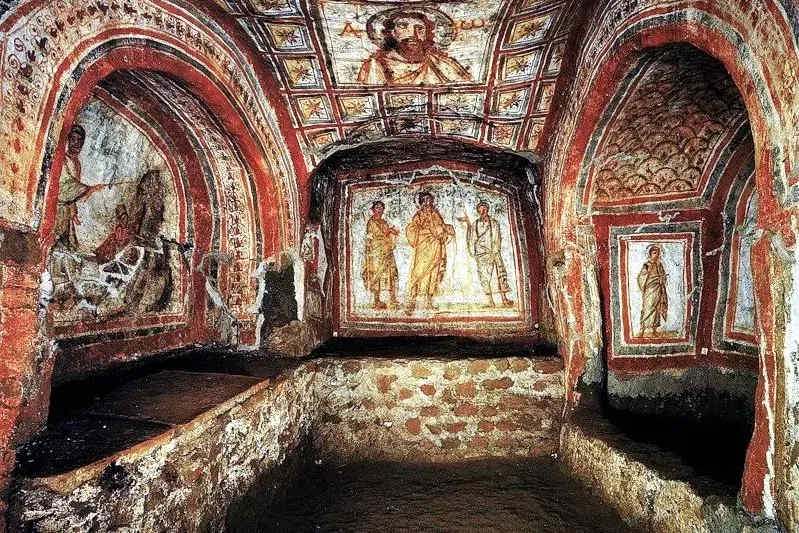
Interior view of a chamber in the Catacombs of San Callisto, featuring ancient Christian frescoes myromepass
Secret Missions of Faith
In this climate of fear, celebrating Mass and distributing Communion to imprisoned Christians became incredibly dangerous missions 3. Deacons typically carried the Eucharist from secret liturgical celebrations to those who couldn’t attend due to imprisonment or illness 4. But as persecution intensified, even this essential ministry became life-threatening 5.

Stairway inside the Catacombs of Callixtus in Rome colosseumrometickets
The Boy Who Said “Yes” to God
A Young Heart Full of Faith
Tarcisius served as an acolyte, a young altar server who assisted in liturgical functions 4. Though only twelve years old, he possessed remarkable spiritual maturity and deep reverence for the Eucharist 3. When Pope Sixtus asked for volunteers to carry the Blessed Sacrament to imprisoned Christians, no adult stepped forward 5.
That’s when young Tarcisius offered himself for this perilous mission 5. “My youth will be the best shield for the Eucharist,” he argued, understanding that a young person would be less likely to arouse suspicion among Roman authorities 5.
The Sacred Trust
Before departing, the priest entrusted Tarcisius with both the sacred Host and solemn instructions 5. “Tarcisius, remember that a heavenly treasure has been entrusted to your weak hands,” the priest warned 5. “Avoid crowded streets and do not forget that holy things must never be thrown to dogs nor pearls to pigs 5. Will you guard the Sacred Mysteries faithfully and safely?”
Tarcisius’s response revealed his complete understanding of the gravity of his mission: “I would die rather than let go of them” 5.
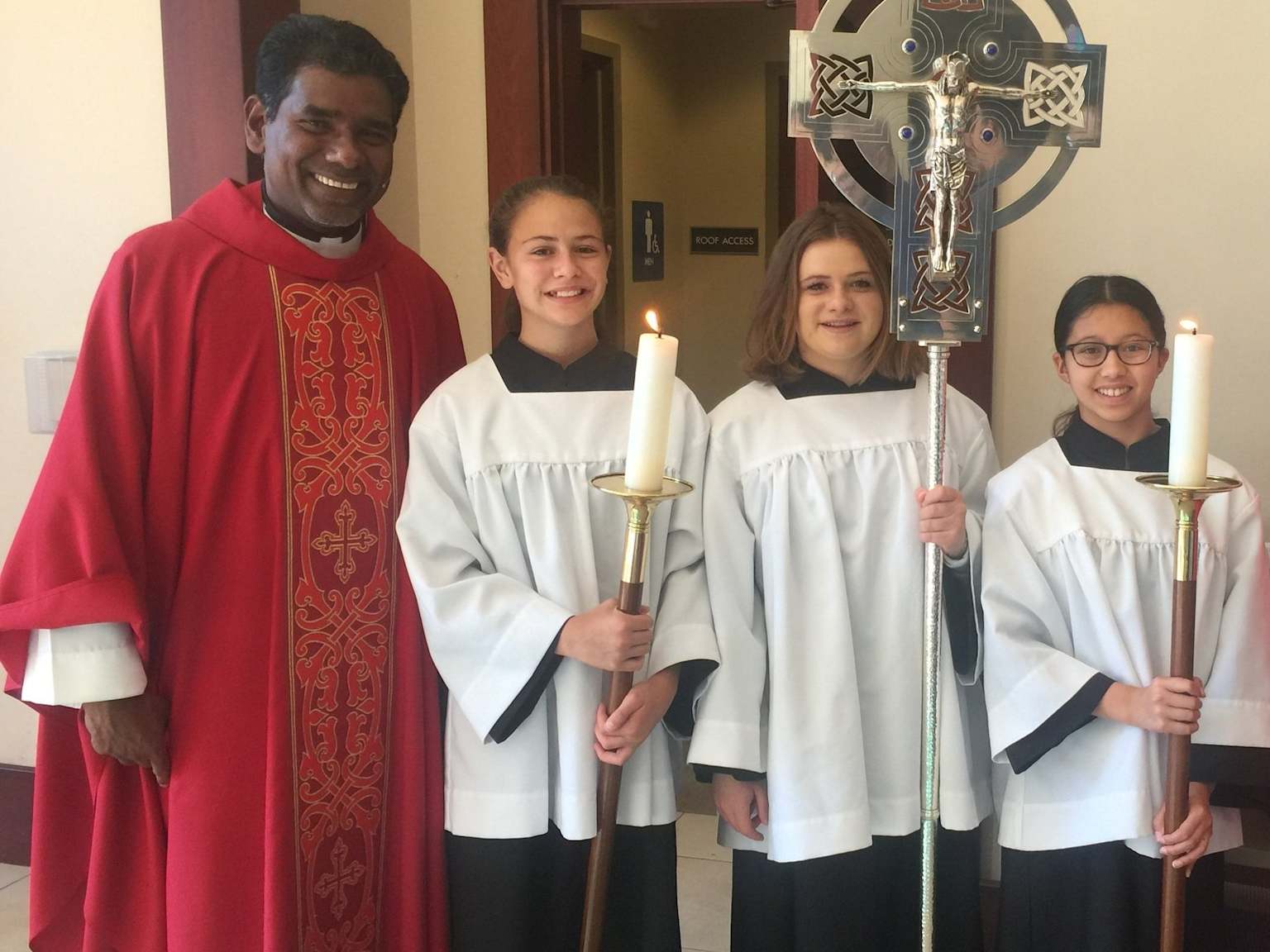
A priest and altar servers pose together inside a Catholic Church stkilianmissionviejo
The Ultimate Sacrifice
Confronted by Friends
As Tarcisius traveled through Rome with the Eucharist carefully wrapped in linen cloth and pressed against his chest, he encountered a group of pagan friends 24. They invited him to join their games, but this time he refused, and they noticed he was protecting something precious 4.
When they realized Tarcisius was a Christian, their curiosity turned to aggression 4. The small gang became a mob, demanding to see what he was hiding 4. But Tarcisius refused to surrender the Eucharist, even under physical assault 4.
A Martyr’s Death
The violence that followed was both brutal and sustained 4. The mob kicked, beat, and stoned Tarcisius, yet he refused to relinquish his hold on the Eucharist 9. Throughout the assault, he maintained his protective grip on the sacred Host, even as his strength failed and his life ebbed away 4.
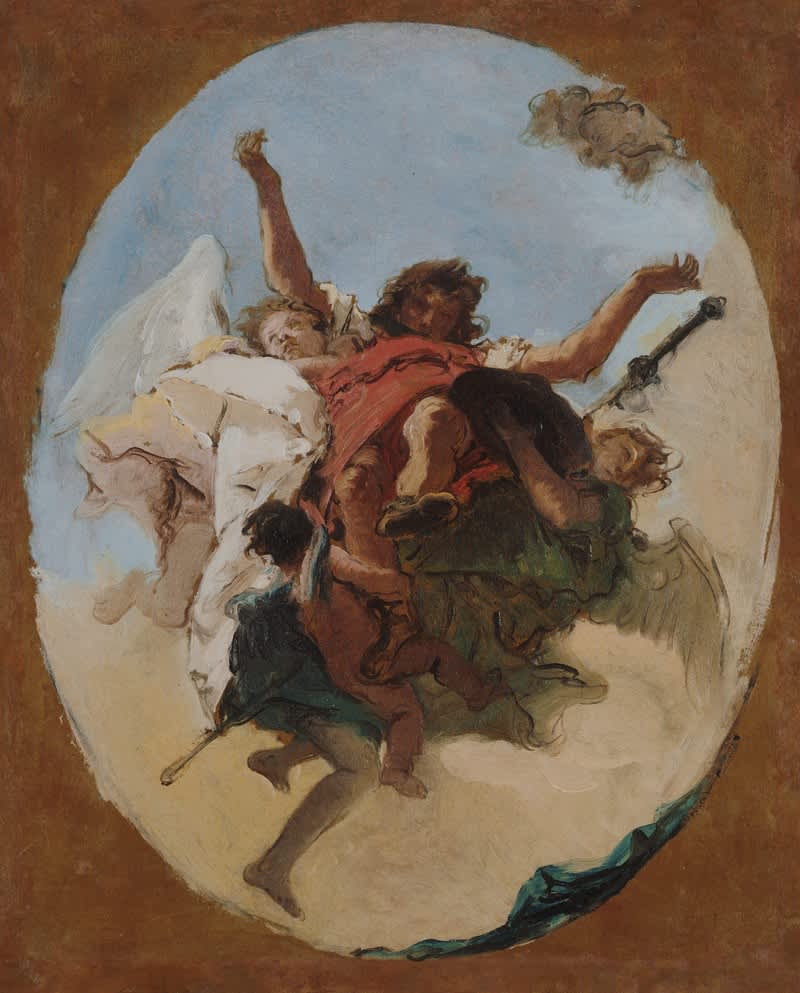
The Martyrdom of Saint Tarcisius by Antony Troncet artera
According to tradition, a Roman soldier named Quadratus, who was secretly a Christian, discovered the dying boy and carried him to safety 5. However, Tarcisius died still clutching the small linen cloth containing the Eucharist to his chest 5. This image of the young martyr maintaining his protective hold on the Blessed Sacrament even in death has become one of the most powerful symbols of Eucharistic devotion in Catholic tradition 9.
A Mystical Mystery
One particularly moving aspect of the Tarcisius tradition involves the fate of the Eucharist he died protecting 5. According to some accounts, when his body was examined, the consecrated Host could not be found either in his hands or clothing 5. This mystical tradition suggests that the Eucharist had become one with his flesh, forming together with his body “a single immaculate Host offered to God” 5.
Historical Foundation
The Witness of Pope Damasus
The most significant historical evidence for Saint Tarcisius comes from a poetic inscription composed by Pope Damasus I (366-384 AD) 1. This Latin poem, placed on Tarcisius’s tomb in the Catacomb of San Callisto, provides the earliest account of the young martyr’s story 1.
Pope Damasus drew a powerful parallel between Tarcisius and Saint Stephen, the first Christian martyr 1. The inscription reads in part: “When a raving gang was pressing holy Tarcisius to reveal to the uninitiated the sacraments of Christ that he was carrying, he wished rather to release his spirit, struck down, than to betray the heavenly limbs to mad dogs” 1.
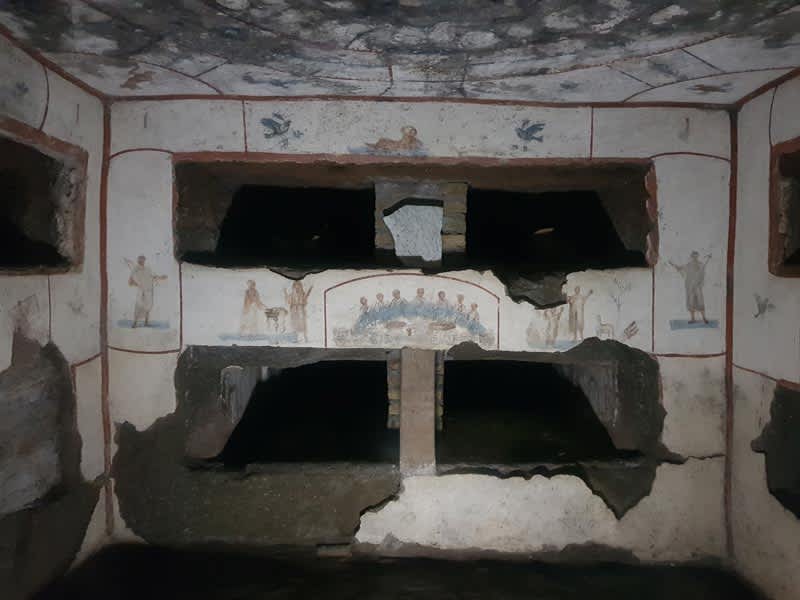
Interior of a chamber in the Catacombs of Callixtus, featuring burial niches and Christian frescoes catacombesancallisto
Veneration Through the Ages
Tarcisius was originally buried in the Catacombs of San Callisto, and Pope Damasus’s inscription was placed on his tomb 1. Later, his relics were moved to the San Silvestro in Capite church in Rome, though excavations to find them have been unsuccessful 1. Today, relics are claimed by the Chapel of the Guardian Angel in the Church of San Domenico Maggiore in Naples, having been transferred there in 1646 1.
Patron Saint of the Young
Guardian of Altar Servers
Saint Tarcisius is widely recognized as the patron saint of altar servers, a designation that reflects his role as a young acolyte who served the early Church with exceptional devotion 6. In 2010, Pope Benedict XVI addressed over 55,000 altar servers from across Europe, emphasizing Tarcisius’s example of faithfulness to the Lord 1011.
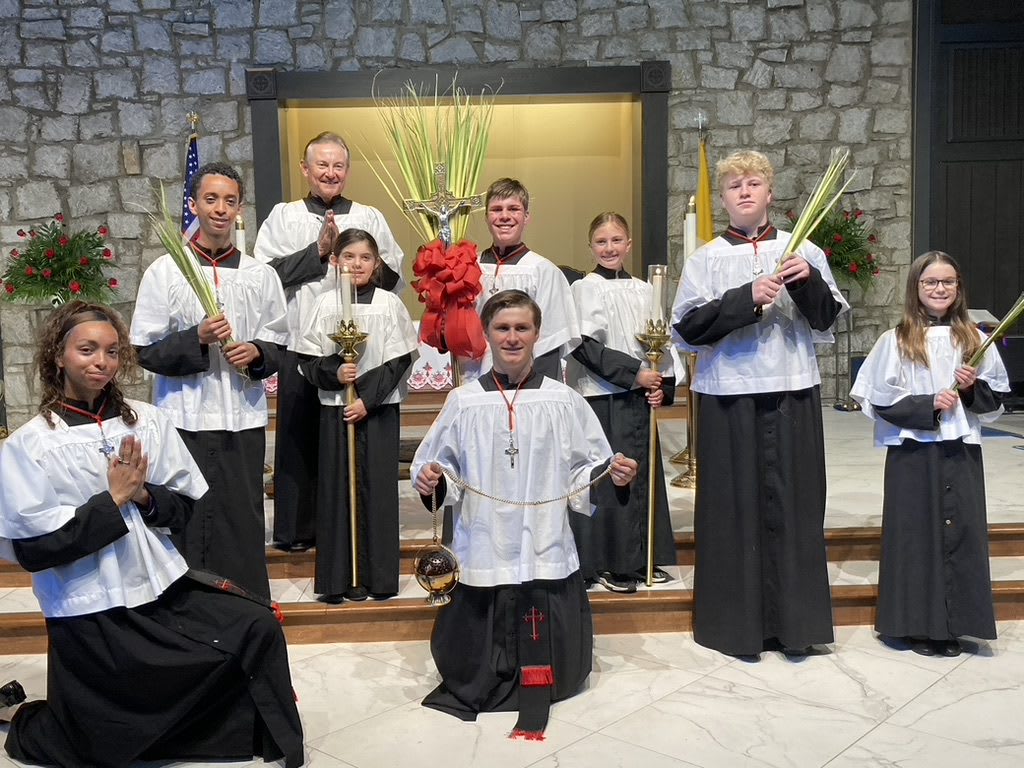
A group of altar servers with a priest in a Catholic church judeatl
“Dear altar servers, St. Tarcisius’ testimony and this beautiful tradition teach us the deep love and great veneration that we must have for the Eucharist,” Pope Benedict XVI declared 10. “It is a precious good, a treasure of incomparable value; it is the Bread of life, it is Jesus himself who becomes our nourishment, support, and strength on our daily journey” 10.
Protector of First Communicants
Saint Tarcisius is also venerated as the patron saint of first communicants 6. His story helps children understand that age doesn’t diminish one’s responsibility to treat the Eucharist with proper reverence and protection 3. Many parishes use his feast day as an opportunity to reinforce teachings about Eucharistic devotion among young Catholics 3.

Two altar servers pose with a priest inside a church olgparish
Spiritual Lessons for Today
Four Key Teachings from Saint Tarcisius
1. The Real Presence of Christ in the Eucharist
Tarcisius’s willingness to die rather than allow the consecrated Host to be profaned reflects the Catholic understanding that the Eucharist truly contains the Body, Blood, Soul, and Divinity of Jesus Christ 10. His example challenges us to examine our own reverence for the Blessed Sacrament 3.
2. Age Is No Barrier to Sanctity
At only twelve years old, Tarcisius demonstrated heroic virtue that many adults struggle to achieve 4. His story reminds us that God can work through anyone, regardless of age, when they have faith and courage 3.
3. Courage in the Face of Opposition
When confronted by his pagan friends, Tarcisius chose faithfulness to Christ over personal safety or social acceptance 4. Today’s Catholics face different but real pressures to compromise their faith, and Tarcisius’s example provides inspiration for standing firm 3.
4. Service to Others in Need
Tarcisius volunteered for a dangerous mission to bring the Eucharist to imprisoned Christians who couldn’t attend Mass 5. His selfless service reminds us to look for ways to serve others, especially those who are suffering or marginalized 3.
Celebrating Saint Tarcisius Today
Feast Day and Liturgical Recognition
Saint Tarcisius’s feast day is celebrated on August 15th, which coincides with the Solemnity of the Assumption of the Blessed Virgin Mary 115. Due to this overlap, he is not included in the General Roman Calendar but is listed in the Roman Martyrology 1.
A Prayer to Saint Tarcisius
Catholics can invoke Saint Tarcisius’s intercession with this traditional prayer for altar servers 14:
“O God, You have graciously called me to service at Your altar. Grant me every grace necessary to serve You faithfully, reverently and wholeheartedly. Grant, too, that I may always keep in mind the example of St. Tarcisius, who died protecting the Most Holy Eucharist, and walk the same path that led him to Heaven. St. Tarcisius, heroic acolyte and martyr, pray for me and for all who serve at the holy altar of God.”
Questions for Reflection
As we contemplate the life and martyrdom of Saint Tarcisius, consider these questions for personal reflection or family discussion:
- How can we cultivate deeper reverence for the Eucharist in our daily lives?
- What “missions” is God calling us to undertake in our faith communities?
- Where are we called to show greater courage in living our Catholic convictions?
- How can we better support young people’s spiritual growth and understanding of the Eucharist?
Conclusion
Saint Tarcisius of Rome stands as a timeless example of courage, faith, and devotion to the Eucharist 110. His story, rooted in the historical testimony of Pope Damasus I but enriched by centuries of Christian tradition, continues to inspire Catholics worldwide 1. For altar servers, first communicants, and all the faithful, his example demonstrates that heroic sanctity is possible at any age when we truly love Christ and His Church 10.
In our modern world, where faith faces new challenges and pressures, Saint Tarcisius reminds us that some things are worth any sacrifice 3. His protection of the Eucharist with his very life calls us to examine our own devotion to the Blessed Sacrament and our willingness to stand firm in our Catholic convictions 10. Through his intercession and example, may we all grow in love for Jesus, present in the Eucharist, and find the courage to serve Him faithfully in our daily lives 10.
References
- “Tarcisius.” Wikipedia. https://en.wikipedia.org/wiki/Tarcisius
- “St. Tarcisius – Martyr of the Eucharist.” My First Holy Communion. https://www.myfirstholycommunion.com/portfolio-view/st-tarcisius-boy-martyr-of-the-eucharist/
- “Saint Tarcisius: The Young Martyr Who Died Protecting the Eucharist.” Ecclesiastical Sewing. https://blog.ecclesiasticalsewing.com/2025/04/02/saint-tarcisius-the-young-martyr-who-died-protecting-the-eucharist/
- Stevens, Clifford. “St. Tarcisius.” EWTN Global Catholic Network. https://www.ewtn.com/catholicism/library/st-tarcisius-5890
- “Saint Tarcisius: The Boy Who Protected the Eucharist.” Our Lady of Fatima Parish. https://www.olfparish.org/blog.php?month=202309&id=242968568&cat=&pg=1&title=Saint+Tarcisius%3A+The+Boy+Who+Protected+the+Eucharist
- “Saint Tarcisius – Patron Saint of Altar Servers.” Coetus Internationalis Ministrantium. https://www.minis-cim.net/en/saint-tarcisius-2/
Connect with Us!
Explore more Catholic content and support our mission:

